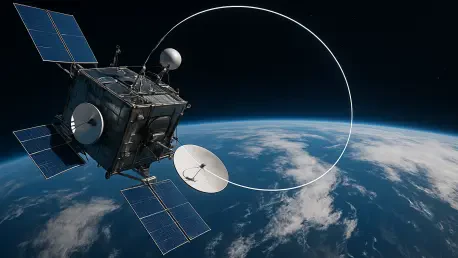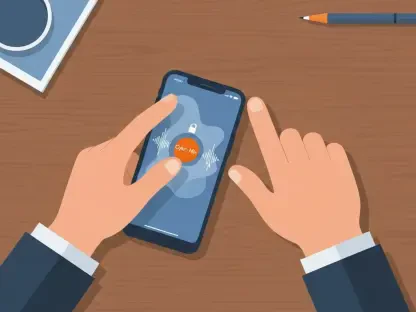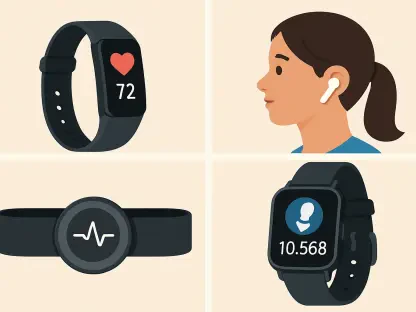Imagine a hiker stranded in the vast wilderness of a national park, miles from the nearest cell tower, with an injury needing urgent attention, and the only way to communicate is through a smartphone that can send a photo of the wound directly to rescuers via satellite. This scenario is no longer a distant dream, thanks to T-Mobile’s groundbreaking integration of Multimedia Messaging Service (MMS) with SpaceX’s Starlink satellite network. Launched as an enhancement to their T-Satellite with Starlink service, this innovation allows select Android users to transmit images, audio clips, and short videos even in the most remote “dead zones.” Initially rolled out in beta earlier this year with basic text messaging, the addition of MMS marks a significant leap forward. It addresses a critical gap in mobile communication for rural residents, adventurers, and emergency situations, potentially transforming how connectivity is perceived in isolated regions.
The implications of this technology are profound, especially for those who live or travel beyond the reach of traditional cellular networks. By leveraging direct-to-cell technology, T-Mobile enables compatible Android devices to connect to Starlink’s constellation of over 450 low-Earth orbit satellites, bypassing the need for ground-based infrastructure. Early demonstrations in remote areas like Southern California have shown the system’s capability, though delays and quality issues persist. For someone in a crisis, however, the ability to send a visual or audio message could mean the difference between timely help and a dire outcome. While the service is currently limited in scope and faces technical hurdles, its promise to bridge connectivity divides is undeniable, sparking curiosity about its broader impact.
The Tech Behind the Breakthrough
Understanding Direct-to-Cell Innovation
At the core of T-Mobile’s satellite MMS offering lies direct-to-cell technology, a revolutionary method that lets standard smartphones communicate directly with satellites orbiting hundreds of miles above Earth. Unlike older satellite systems requiring specialized equipment or bulky antennas, this approach utilizes the 1900MHz PCS band, supported by specific Android models such as certain Samsung Galaxy and Motorola devices. Starlink’s extensive network ensures coverage redundancy, meaning if one satellite’s signal is obstructed by mountains or buildings, another can often take over. However, the inherent physics of satellite communication introduces latency, and users must maintain a clear view of the sky, which can be problematic in dense forests or urban environments with tall structures blocking the line of sight.
This technology represents a significant shift in how mobile connectivity can be achieved without reliance on terrestrial towers. The ability to send multimedia content via satellite opens up new possibilities for communication in areas previously deemed unreachable. While the system’s design prioritizes functionality over speed, ensuring messages are delivered even if it takes minutes, it still faces challenges in environments where a clear sky isn’t guaranteed. Starlink’s growing constellation continues to improve coverage, but the fundamental requirement for an unobstructed view remains a limiting factor. Nevertheless, the elimination of additional hardware needs makes this a practical solution for many, especially in emergency contexts where every second counts.
Technical Constraints and Early Feedback
Despite the ingenuity of direct-to-cell technology, it’s not without its drawbacks, as early user experiences have highlighted. Sending an MMS through this service can take several minutes due to the significant latency involved in bouncing signals to and from space, testing the patience of users accustomed to instant communication. Bandwidth constraints also mean that file sizes are limited, and compression often reduces the quality of images or audio, which can be frustrating for those expecting high-definition content. Environmental factors, such as heavy cloud cover or storms, further complicate connectivity, sometimes rendering the service temporarily unusable in adverse conditions.
Feedback from initial tests, particularly in remote regions, underscores both the potential and the current imperfections of this system. For individuals in critical situations—like hikers or rural workers—the ability to transmit a low-quality image or voice note still holds immense value, often outweighing the delays. T-Mobile has focused on optimizing the service for low-bandwidth transfers to prioritize delivery over perfection, a decision that aligns with the primary goal of ensuring communication in dire circumstances. As more data from beta users emerges, it’s clear that while the technology isn’t yet seamless, its foundation offers a glimpse into a future where such limitations could be minimized through ongoing advancements.
Challenges and Future Horizons
Navigating Current Limitations
While the introduction of MMS via satellite is a remarkable achievement, several obstacles stand in the way of widespread adoption and flawless performance. Latency remains a significant issue, with messages sometimes taking minutes to send or receive, a stark contrast to the immediacy of terrestrial networks. File size restrictions and necessary compression degrade multimedia quality, meaning a photo or video may lose critical detail. Additionally, environmental challenges like heavy rain or dense foliage can disrupt the satellite signal, especially since a clear view of the sky is essential. These factors can frustrate users who expect consistent performance regardless of location or weather.
Another hurdle lies in device compatibility, as the service is currently restricted to specific Android models that support the required frequency band, leaving a large segment of potential users, including iPhone owners, unable to access it. This limitation narrows the service’s reach and could slow adoption rates, particularly among diverse user groups who might benefit most from such connectivity. T-Mobile’s strategy to bundle this feature into existing plans at no extra cost helps mitigate accessibility concerns, but the narrow device support remains a barrier. Overcoming these technical and logistical challenges will be crucial for transforming this innovation from a niche solution into a universal tool.
Expansion Plans and Upcoming Features
Looking to the near future, T-Mobile has outlined ambitious plans to build on the current MMS capabilities, signaling a commitment to evolving this technology. By October, the company aims to roll out limited satellite data support, which could enable basic app functionalities such as weather updates or minimal browsing in areas devoid of traditional coverage. This step would mark a significant enhancement, moving beyond messaging to offer practical internet access, albeit on a small scale. Such developments could empower remote users with tools previously unimaginable without cellular infrastructure, enhancing safety and convenience.
Further improvements are anticipated in the coming years, with Starlink’s ongoing satellite launches expected to bolster coverage and reduce latency issues over time. T-Mobile’s roadmap includes addressing compatibility constraints, potentially expanding support to a wider range of devices and refining user experience based on beta feedback. The focus remains on erasing connectivity gaps entirely, ensuring that even the most isolated regions gain access to reliable communication. As these enhancements unfold, the service could shift from a supplementary option to a cornerstone of mobile resilience, particularly for rural communities and emergency responders who rely on staying connected.
Industry Impact and Competitive Edge
Embracing Hybrid Network Trends
T-Mobile’s partnership with Starlink to deliver MMS via satellite reflects a broader movement within the telecom sector toward hybrid networks that blend terrestrial and orbital infrastructure. This shift is driven by a pressing need to address connectivity disparities, especially in rural areas and during emergencies where traditional networks often fail. By integrating satellite technology, telecom providers are redefining what resilience means in mobile communication, ensuring that geography no longer dictates access to critical services. T-Mobile’s decision to extend beta access to customers of rival carriers suggests a willingness to collaborate, even as it establishes a strong foothold in this emerging space.
This trend toward hybrid solutions is reshaping industry priorities, pushing companies to innovate beyond conventional cell tower coverage. The ability to maintain communication in “dead zones” not only enhances user safety but also opens new markets for providers willing to invest in satellite integration. T-Mobile’s leadership in this area, as highlighted by their CEO’s description of it as a transformative step for underserved regions, sets a benchmark for others to follow. As hybrid networks gain traction, they could become the standard for ensuring universal connectivity, fundamentally altering how mobile services are delivered across diverse landscapes.
Facing Rivals and Privacy Concerns
As T-Mobile forges ahead with satellite MMS, it’s clear that the competitive landscape in telecom is heating up, with other giants not far behind. Major players like AT&T and Verizon are actively pursuing their own satellite partnerships to tackle connectivity challenges, signaling an industry-wide race to master space-based solutions. While T-Mobile currently holds an edge with its multimedia capabilities, the rapid pace of technological advancement means that rivals could close the gap swiftly. This competition is likely to drive further innovation, benefiting consumers with improved services and broader access over time.
Beyond competition, the rollout of satellite-based communication raises important questions about privacy and data security, as information routed through space may be vulnerable to interception if not properly protected. Industry experts have emphasized the need for robust encryption standards to safeguard user data, a concern that must be addressed as this technology scales. While the service’s ability to empower users in remote areas is widely celebrated, these underlying issues highlight the complexities of integrating satellite networks into everyday mobile use. Balancing innovation with security will be key to maintaining trust and ensuring long-term success.
Reflecting on a Connectivity Milestone
Reflecting on this pioneering step, T-Mobile’s integration of MMS with Starlink’s satellite network stands as a landmark moment in mobile communication history, offering a lifeline in regions once cut off from the digital world. The ability to send multimedia content where no cell towers exist is a testament to the power of innovation, even as challenges like latency and limited device support temper early enthusiasm. This development not only addresses immediate needs for emergency and rural connectivity but also lays the groundwork for a future where “dead zones” become a relic of the past. Moving forward, the focus should shift to refining reliability, expanding compatibility, and ensuring data security through strong encryption. As the telecom industry continues to embrace hybrid networks, stakeholders must collaborate to tackle technical hurdles and prioritize user trust, ensuring that the promise of universal connectivity becomes a tangible reality for all.









